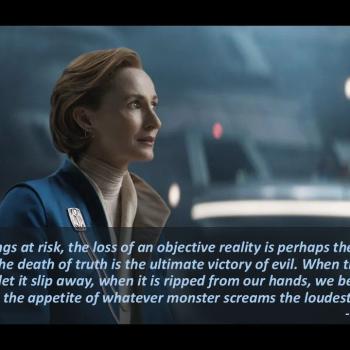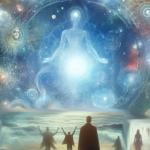A recent post at Uncommon Descent offered a prediction about what ought to be the case regarding E. coli, with an invitation to ‘anyone’ that might be interested in running the experiment. As I read the post, it struck me that the study of this hypothesis would neither support nor disprove anything about ID, as it is unclear what about the independent development of E. coli in humans and baboons would provide support for ‘intelligent design’.
A genuine prediction, in the sense of one that tests a hypothesis or theory, should have a clear focus. If the hypothesis is disproved, that should in most cases be the end of the story. In the case of a theory, which already has other supporting evidence, it may be appropriate to revise rather than discard the theory in light of such a result.
Darwinian evolution, for instance, predicted that, if it is correct, there should be concrete elements of heredity, and that there should be intermediate forms in the fossil record (in time periods that can likewise be predicted), and a long enough history for evolution to occur. All of these predictions were disputed, were tested, and were confirmed.
If ID is ready to start doing actual science, it needs more than hunches. It needs specific predictions that ID requires in order to be correct.
I’ve got a suggestion. Since ID predicts that the designer acted by means of interventions that can be detected, rather than through natural processes, then presumably the designer (being intelligent) knew its creations would study such design and desired this. We should therefore expect that on cells of all life forms, there should be written “Created by an intelligent designer. All rights reserved”. I will grant some leeway in the wording, but a view of creation that believes the creator to have left clear evidence of his (or her) creative work should expect such evidence, and not the vague sorts of “evidence” ID is currently offering us.
If young-earth creationism were correct, we would have expected the Grand Canyon (created during the great flood) to be inscribed with the words “Let this be a lesson to you”.
A student of mine believes that Starbuck is a cylon on the new Battlestar Galactica series. The evidence is that Starbuck seemed to have died and now has reappeared (cylons do that), and the producers promised that all five of the ‘final five’ cylons would be revealed in the season finale. His theory makes a clear prediction: no one else will be revealed as the last remaining human-model cylon.
Theory, prediction, testability, result. Can ID really offer us something of this sort? Is it will to give up its 20-year plan to become the dominant viewpoint, and intstead offer testable predictions that have the potential not only to make, but also to break, Intelligent Design?
For those theologians open to input from science, the issue is not how to prove that the concept of God we already have is demonstrated by the scientific evidence, but how the exciting new data that science brings to light leads us to ask new and unexpected questions, and leads to new insights about the universe, which leads us to exciting new lines of inquiry about God and about our place in the universe.












